source:CCTV.com editor:Zhang Wenni
Editor's note: The 24 solar terms, as a supplementary calendar for guiding agricultural affairs in ancient China, are the result of the long-term experience and wisdom accumulated by the Chinese working people. This profound scientific and cultural system is also one of the essence and representatives of excellent traditional Chinese culture. In order to further promote traditional culture, enhance the understanding and interest of the vast number of netizens in traditional culture, and further strengthen cultural confidence, the "Beautiful Xi'an" series of themed activities organized by the Cyberspace Administration of the Xi'an Municipal Committee of the Communist Party of China during the "Internet China Festival" in Xi'an have launched a series of cultural science popularization articles to experience the charm of traditional culture and inherit the new trend of civilization of the times.
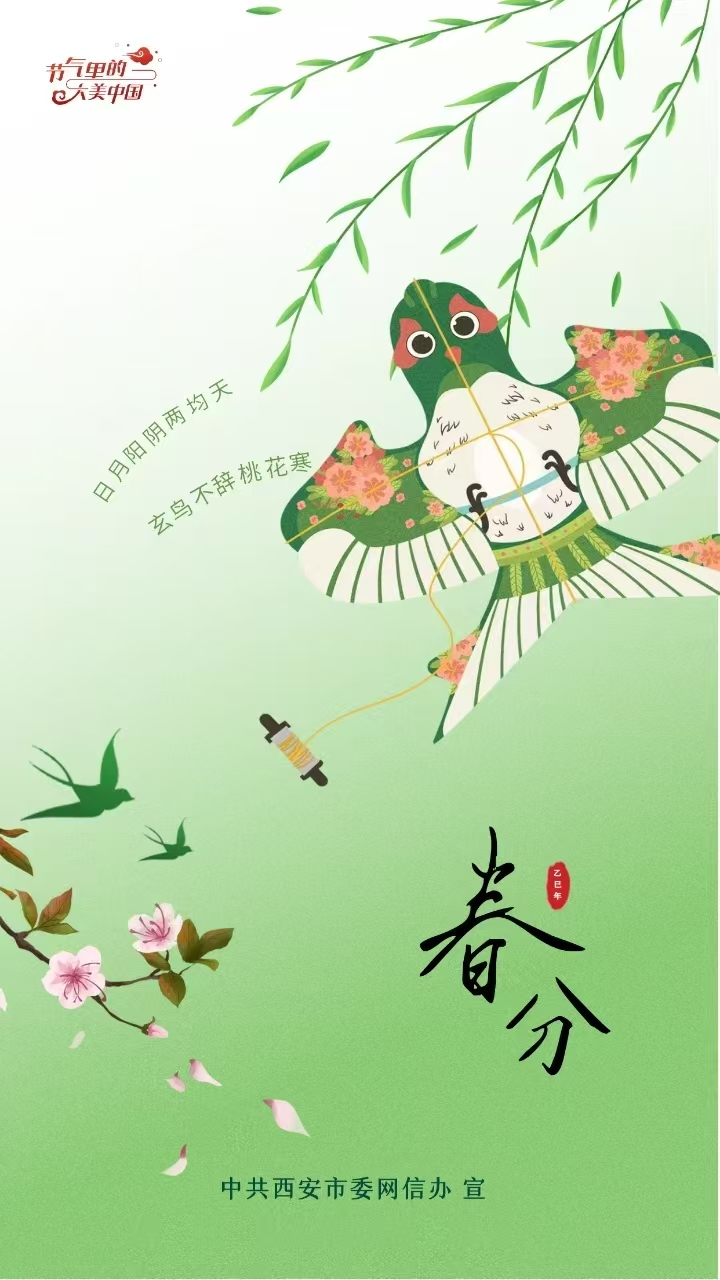
At the age of one, spring is already half, and the world is fragrant. With the warm spring breeze and grass growing and birds flying, we are welcoming the Spring Equinox solar term.
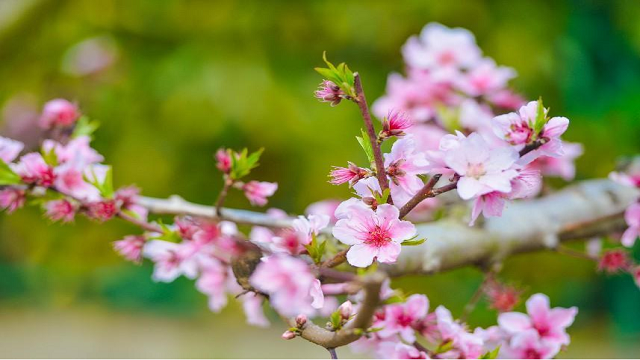
The Spring Equinox, also known as the "day and night equinox", "day and night equinox", and "mid spring moon" in ancient times, is the fourth solar term among the 24 solar terms, usually on March 20th or 21st every year. The "Collection and Interpretation of the Seventy Two Seasons of the Moon" records: "In the middle of February, there is a division, which is half of the ninety days. Therefore, it is called a division." The "Spring and Autumn Annals: Yin Yang Entering and Exiting Chapters" states: "In the spring equinox, there is a half of yin and yang, so the day and night are evenly distributed and the heat and cold are flat." On this day, the sun shines directly on the equator, and the length of day and night are evenly distributed, which is exactly half of the ninety days of spring, so it is called the "Spring Equinox".
During the Spring Equinox season, as the cold gradually recedes and the temperature rises, one can watch movies and hear thunder amidst the clouds. In his poem "Ode to the Twenty Four Qi: Mid February of the Spring Equinox," Tang Dynasty poet Yuan Zhen delicately depicted the phenological phenomena of the Spring Equinox season.
In ancient China, the Spring Equinox was divided into three periods: the first period was the arrival of the Yuan bird, also known as the Xuan bird or swallow. Swallows are migratory birds that come at the spring equinox and go at the autumn equinox. After the vernal equinox, swallows fly back from the south to the north, carrying mud to build nests and adding vitality to the earth; At the second equinox, when the thunder is heard, the weather warms up and there is more spring rain accompanied by dull thunder; At the beginning of the third hour, electricity begins. As the ancient saying goes, "Electricity and sunshine are also present, and the four suns grow long and strong. When the qi is released, the light shines." At this time, spring rain is no longer "moistening things silently", but is accompanied by lightning and thunder.
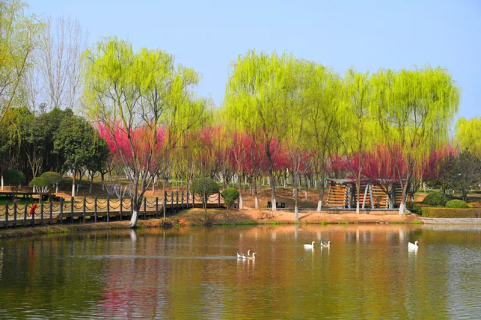
The willows on the shore are green, the peach blossoms are burning, and everything is singing in harmony, all showcasing the vibrant vitality of spring. Ancient poets also had a special fondness for the Spring Equinox. Li Bai wrote in his poem "Drinking Alone under the Moon": "In the city of Xianyang in March, a thousand flowers and a day are like brocade. Who can be alone in spring? We must drink from it." Ouyang Xiu wrote in his poem "Walking on the Sands": "The scenery is clear with rain, the weather is at the Spring Equinox, and a thousand flowers and a hundred flowers compete for brightness." This vividly depicts the beautiful scene of a hundred flowers competing for beauty during the Spring Equinox season. Su Shi wrote in his poem "After the Spring Equinox at Gui Chou": "Snow enters the spring equinox and becomes sparse, and half blooming peaches and plums are not as powerful." It depicts the rare phenomenon of snowflakes falling during the spring equinox season and laments the fickleness of nature. The Tang Dynasty poet Xu Xuan wrote a poem: "The swallows fly like one by one, and the flowers have fallen one after another
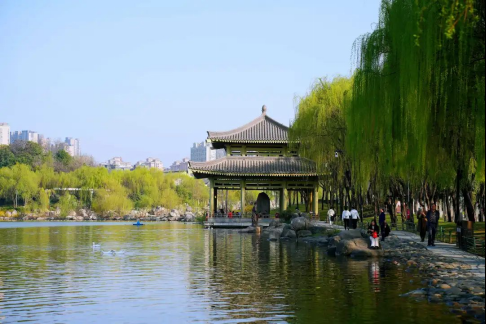
In the spring, one may not enjoy themselves, but they may be a fool. "The Tang Dynasty poet Bai Juyi was very straightforward, expressing that if one does not go to play and enjoy the beautiful scenery of spring, they may be a fool. In ancient times, the spring outings of literati and scholars in Chang'an City were full of variety and elegance. They dined by the water, invited friends, enjoyed flowers and drinks, and composed poems and essays. The "Legacy of Kaiyuan Tianbao" records: "There were few heroes in Chang'an. Every spring, they would form alliances with friends, set up low horses, decorate them with brocade and gold, and tie them under flowers and trees, so that their servants could carry wine vessels and follow them. When they encountered a trap, they would stay on horseback and drink." During the Tang Dynasty, Chang'an women were also sweet and elegant, "driving" for spring outings, having wild banquets on the spot, fighting flowers and grass.
On March 3rd, the weather is new, and there are many beautiful people by the water in Chang'an. "Du Fu's" Beautiful People's Journey "showcases the scene of Chang'an women's spring outing in brocade and gorgeous clothes.
Spring enters the hundred mile home of Chang'an, and every day by the lake is filled with fragrant cars. "In March of the sunny spring, the spring scenery is bright, and the spring scenery slowly unfolds in the streets and alleys of Xi'an. The cherry blossoms in Qinglong Temple are colorful, the magnolias and plum blossoms in the Big Wild Goose Pagoda are charming, and the beautiful scenery of the smoke and willows on the Ba River is flourishing... The most eye-catching thing is undoubtedly the new era" Chang'an beauties "dressed in gorgeous clothes, wearing golden and jade hairpins, and lightly tapping the flowers
.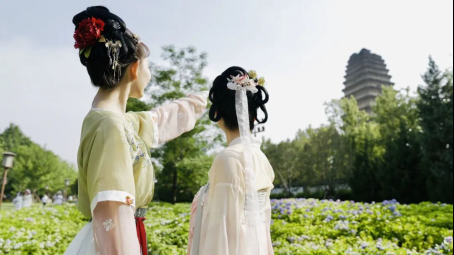
In recent years, the traditional Chinese clothing culture in Xi'an has flourished, with various rental stores for Hanfu emerging like mushrooms after rain, from the gorgeous Tang style dresses to the dignified Han style deep garments. The Hanfu economy continues to be booming, and by 2024, the number of Hanfu operating units in Xi'an will rank first among cities in China. Citizens and tourists dressed in traditional Hanfu stroll under the ancient city walls, the Daming Palace National Heritage Park, the Datang Furong Garden, and the Datang Never Night City... Holding round fans, walking lightly, looking back and looking up, admiring life, and showing classical charm in every gesture, as if traveling back to the prosperous Tang Dynasty, it has also become a beautiful scenery in the city.

During the Spring Equinox season, the urban vitality of Xi'an also becomes increasingly vigorous with the rise of temperature. The China Europe freight train (Xi'an) has repeatedly broken records, becoming a "steel camel caravan" connecting Europe and Asia, injecting strong impetus into Xi'an's open development. Since the beginning of 2025, Xi'an International Port Station has repeatedly broken the daily loading record of the station's China Europe trains, with a maximum of 1314 trains loaded in a single day.
In February, the grass grows and the warblers fly, brushing against the willows on the embankment and getting drunk with spring smoke. Children return early from school and take advantage of the east wind to fly kites. The folk customs during the Spring Equinox are also very interesting, such as flying kites, laying eggs, and eating spring vegetables. "When the vernal equinox comes, the eggs are pretty". According to historical records, the tradition of laying eggs on the vernal equinox originated in China more than 4000 years ago, and people celebrate the arrival of spring. Some folk experts also suggest that the "laying of eggs" during the Spring Equinox is intended to preserve spring and nurture good luck. Nowadays, every spring equinox, tens of millions of people around the world are conducting the "egg laying" experiment, and the gameplay is also very simple: choose a fresh egg and gently stand it upright on the table.
The spring equinox is a precious moment when wheat stands up. After the spring equinox, winter wheat enters a critical period of greening and jointing, which is also a season that requires hard work and cultivation throughout the year. Farmers follow the laws of nature, sow seeds of hope, and look forward to the fruitful harvest in autumn. Plant one grain of millet in spring and harvest ten thousand seeds in autumn. Let us work hard and sow hope in this season of strong spring colors. Take advantage of the spring scenery and keep half of it, don't let it go to waste this morning.